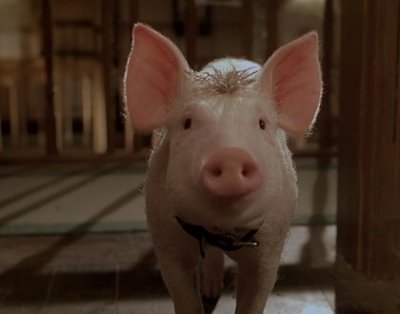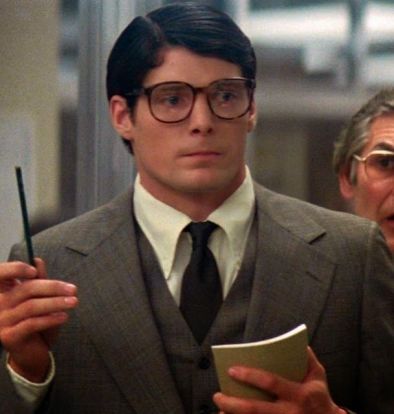Is Neo in The Matrix symbolically analogous to Jesus Christ? That is the question I would like to answer with this website. However, before I start talking about the presence of religious themes in The Matrix, I must first establish what it is that is meant by the phrase “Christlike Figure”.
It’s basically just Jesus, right?
Yes. But it’s a little more complicated than that. Kozlovic (2004) argues that there is a distinction between actual depictions of Jesus (Jesus-figures) and characters whose story arcs fulfill basic characteristics of the Jesus story (Christ-figures). Jesus-figures are attempts to tell the story of Jesus as it appears in the Bible, portraying Jesus as a human man who preaches to disciples. It’s pretty straight forward. Christ-figures on the other hand can have much more variation in their depiction. Kozlovic gives a range of examples of Christ figures who do not conform to the archetypal bearded-white-guy depictions of Jesus in cinema including E.T., Edward Scissorhands, and Babe (the pig).

While Christ-figures can have substantial variation in visual depiction, symbolically they all fulfill the same roles. To carryout the life and mission of Jesus Christ: salvation for humanity, sacrificial death, and eventual Resurrection being chief among these.
Kozlovic’s 25 tips for being Christlike
Kozlovic (2004) outlines 25 characteristics of christ-like figures, some of which I believe have more relevance to The Matrix than others and I have omitted the less relevant ones for the sake of brevity. Essential (and indeed fairly obvious) characteristics are that they are tangible i.e. real figures within the context of the film (wow gosh, ya think?), central to the plot, and are outsiders (Thus their message or mission is to bring or reveal outsider information to a larger group). Relating to their deeds and missions are the characteristics of being in some way super normal or otherwise having abilities which aren’t natural in the world of the film, and being given their task by a divine or otherworldly character or presence. Jesus’ mission came from the heavens and he performed miracles, and thus so must a Christ-figure. They also tend to have alter-egos or otherwise have multiple identities a “normal” identity and a “super normal” one, which Kozlovic argues was a key characteristic of Jesus (He was a humble carpenter, but also the Son of God). But the “super normal” identity is the identity of Christ which demonstrates his connection to god, and therefore his true nature as the Savior. An example of this is often found in superhero stories: Superman dresses up as a mild mannered reporter, but as Superman he demonstrates his “true” identity. Compare and contrast this with Bruce Wayne, who only dresses as batman, but underneath is merely a regular human.

But characteristics for Christ-figures aren’t just found in one character. We can look at the supporting cast for evidence of Christ-like status as well. Christ-figures are often followed by groups of people (usually but not always 12) who trust and support them, representing Jesus’ disciples. Sometimes one of these disciples will be a woman who has a close, sometimes sexual, relationship with the figure. This woman represents Mary Magdalene and her unclear relationship with Jesus. It is popular to interpret Jesus and Mary’s relationship as sexual (the DaVinci Code series of books is based on this concept) so liberties are often taken when writing a Christlike figure. After all, a screenplay without a love sub-plot is an uncommon thing. Another of these disciples will often be a betrayer, who has become disillusioned with the Christ-figure and sells them out. This character represents Judas Iscariot, who sold Jesus to the Romans for 30 pieces of silver.
Another supporting character in the Christ-figure myth is the prophet, a character who identifies the messianic status of the Christ-figure and in some way assists in symbolically baptizing them, before taking a symbolic backseat to the hero. This character archetype is symbolic of John the Baptist, who identifies Jesus as the messiah to his followers (Kozlovic 2004). Kozlovic identifies Morpheus, from The Matrix, as a prophetic character, who is tasked with finding “the one” who he understands to be greater and more powerful than he will ever be.
The single most important identifying characteristic of the Jesus story is of his death and resurrection. Thus, almost every single Christ-figure will at some point die, and (often) be resurrected (either physically or metaphorically). There are several key features of this event which Kozlovic uses to identify various filmic resurrections as Christlike: 1. The Christ-figure knows he is going to die, and he does not attempt to escape it. Jesus knew that he would die, and he told his disciples not to fear this. 2. The death is sacrificial, the figure willingly gives his life in order to save another life. Jesus gave his life as a sacrifice in order to save all of humanity from the burden of original sin. 3. The death may contain crucifix imagery. This is by far the most overt way a filmmaker can allude to Christ in their film. By having the character die in a pose reminiscent of Jesus on the cross (with arms outstretched and a sorrowful look on their face), a film explicitly evokes the image most associated with Christianity. A notable example of this is the death of Sgt. Elias in 1986’s Platoon.

And finally 4. the resurrection can also be triumphant; the story is at it’s lowest point, the hero has just died and it seems like there is no way this could end well. In resurrection our hero not only returns from death, but they confront and defeat evil triumphantly. The hero doesn’t just come back from the dead to wallow in a pitiful situation, they save the day because of this resurrection.
Alongside the crucifix, films often make explicit references to Jesus Christ or God through character naming conventions. Christ-figures can have the initials J. C., as Kozlovic notes with John Connor (The Terminator films) and John Cole (Twelve Monkeys). While there are no characters in The Matrix with the JC initials, characters and places are given biblical names (Trinity, the ship Nebuchadnezzar, and the human city of Zion). Other characters can also make use of so called “Holy Exclamations” (Kozlovic 2004) to identify the Christ-figure. Non-christlike characters exclaim various forms of the name of god or otherwise invoke christian holiness. In The Matrix, for example, a minor character speaking to Neo says the sentence “You’re my own personal Jesus Christ, you know that?”. Although there are generally no important character actions involved, these little exclamations serve as explicit nods to the themes of the film’s subtext.
The final few characteristics of Christlike figures relate to their lives and personalities. Frequently Christlike figures will come from poor backgrounds and often wear tattered garments. This references both Jesus’s literal background as a poor carpenter, and his associations with social outcasts of his time. Jesus didn’t hobnob with cultural elites, he preached and befriended sex workers and fishermen. Likewise a Christ-figure will associate with the impoverished and the downtrodden and as a heroic figure will fight for their cause. Christ-figures are also portrayed as innocent (without wrong doing, and therefore without sin), this innocence is often characterized as simplicity; the ability to accept new revelations about their world or identity, as a child would be able to accept truths that adults with entrenched beliefs would have difficulty coming to terms with.
So you’re saying that Neo fulfills all of these characteristics?
Yes, he’s all that and a bag of chips. But before we get to that, let’s first explore some of the more explicit christian references and iconography present in The Matrix.